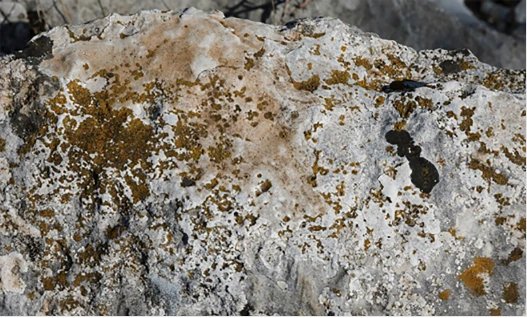Horticulture Perlite & Expanded Perlite - Optimal Drainage & Growth
- Understanding Horticultural Growing Media
- Technical Superiority of Expanded Perlite
- Performance Comparison: Perlite vs Competing Materials
- Custom Blends for Specific Crop Requirements
- Commercial Nursery Implementation Case Study
- Optimizing Container Media Composition
- Sustainable Future of Mineral Amendments

(horticulture perlite )
Essential Characteristics of Horticulture Perlite
Modern cultivation increasingly relies on expanded perlite as a cornerstone mineral amendment, with global consumption reaching 2.3 million metric tons annually. This volcanic glass derivative undergoes thermal expansion at 1600°F, creating a porous structure that achieves optimal air-filled porosity (25-35%) while retaining 18-23% water-holding capacity.
Technical Superiority of Expanded Perlite
Laboratory tests demonstrate perlite's unique combination of physical stability and chemical neutrality (pH 6.5-7.5). Unlike organic alternatives, it resists decomposition for 5-7 growing cycles while maintaining consistent particle structure. Sterility testing confirms 0 CFU/g microbial content post-expansion, eliminating soilborne pathogens.
| Property | Perlite | Vermiculite | Coconut Coir |
|---|---|---|---|
| Water Retention (%) | 22 | 52 | 38 |
| Air Porosity (%) | 31 | 12 | 18 |
| Reusability Cycles | 5-7 | 3-4 | 2-3 |
Custom Blends for Specific Crop Requirements
Advanced growers combine perlite with organic amendments in precise ratios:
- Epiphytic Orchids: 40% perlite + 60% bark
- Hydroponic Lettuce: 30% perlite + 70% peat
- Desert Succulents: 60% perlite + 40% sand
Commercial Nursery Implementation Case Study
A 12-acre greenhouse operation achieved 23% faster rooting and 17% reduction in damping-off through perlite-enhanced propagation media. Their standardized mix contains:
- 55% sphagnum peat
- 30% horticultural perlite
- 15% composted bark
Optimizing Container Media Composition
Research from Cornell University demonstrates that perlite-amended substrates maintain optimal bulk density (0.25-0.75 g/cm³) throughout the growth cycle. This prevents the 19% yield reduction observed in non-amended controls due to media compaction.
Sustainable Future of Horticulture Perlite
As global perlite production adopts closed-loop expansion systems, the industry moves toward carbon-neutral manufacturing. Current life cycle analyses show 42% lower embodied energy compared to synthetic alternatives, positioning expanded perlite as the mineral amendment of choice for eco-conscious growers.

(horticulture perlite )
FAQS on horticulture perlite
Q: What is horticulture perlite used for?
A: Horticulture perlite is a volcanic glass used to improve soil aeration and drainage. It prevents compaction and retains moisture while allowing excess water to escape. It’s ideal for potting mixes and hydroponic systems.
Q: How does horticulture expanded perlite differ from regular perlite?
A: Expanded perlite is heated to high temperatures, causing it to "pop" into lightweight, porous granules. This process enhances its water retention and airflow properties. Regular perlite refers to the unprocessed volcanic rock before expansion.
Q: Can vermiculite replace perlite in horticulture?
A: Vermiculite retains more water and nutrients, making it better for moisture-loving plants. Perlite, however, excels in drainage and aeration. The choice depends on the plant’s needs and growing conditions.
Q: Why is expanded perlite popular in hydroponic horticulture?
A: Expanded perlite is sterile, pH-neutral, and lightweight, making it ideal for hydroponics. Its porous structure supports root oxygenation and nutrient delivery. It’s also reusable, reducing long-term costs.
Q: Which plants benefit most from horticulture perlite?
A: Succulents, cacti, and orchids thrive with perlite due to its excellent drainage. Seedlings and cuttings also benefit from its aeration properties. Avoid overuse for plants requiring dense, moisture-retentive soil.
-
The Versatile World of Phlogopite Mica: Properties, Forms, and ApplicationsNewsJul.14,2025
-
The Versatile Applications of Calcined Mica: From Decoration to Industrial UseNewsJul.14,2025
-
The Role of Muscovite Mica in Industrial Insulation MaterialsNewsJul.14,2025
-
The Benefits of Using Expanded Clay Pebbles in Hydroponics and Soil GardeningNewsJul.14,2025
-
Innovative Applications of Mica Flake in Paints and CoatingsNewsJul.14,2025
-
Gardening Expanded Clay Usage: A Complete GuideNewsJul.14,2025
-
The Use of Natural Mica Powder in Skincare ProductsNewsJun.11,2025








